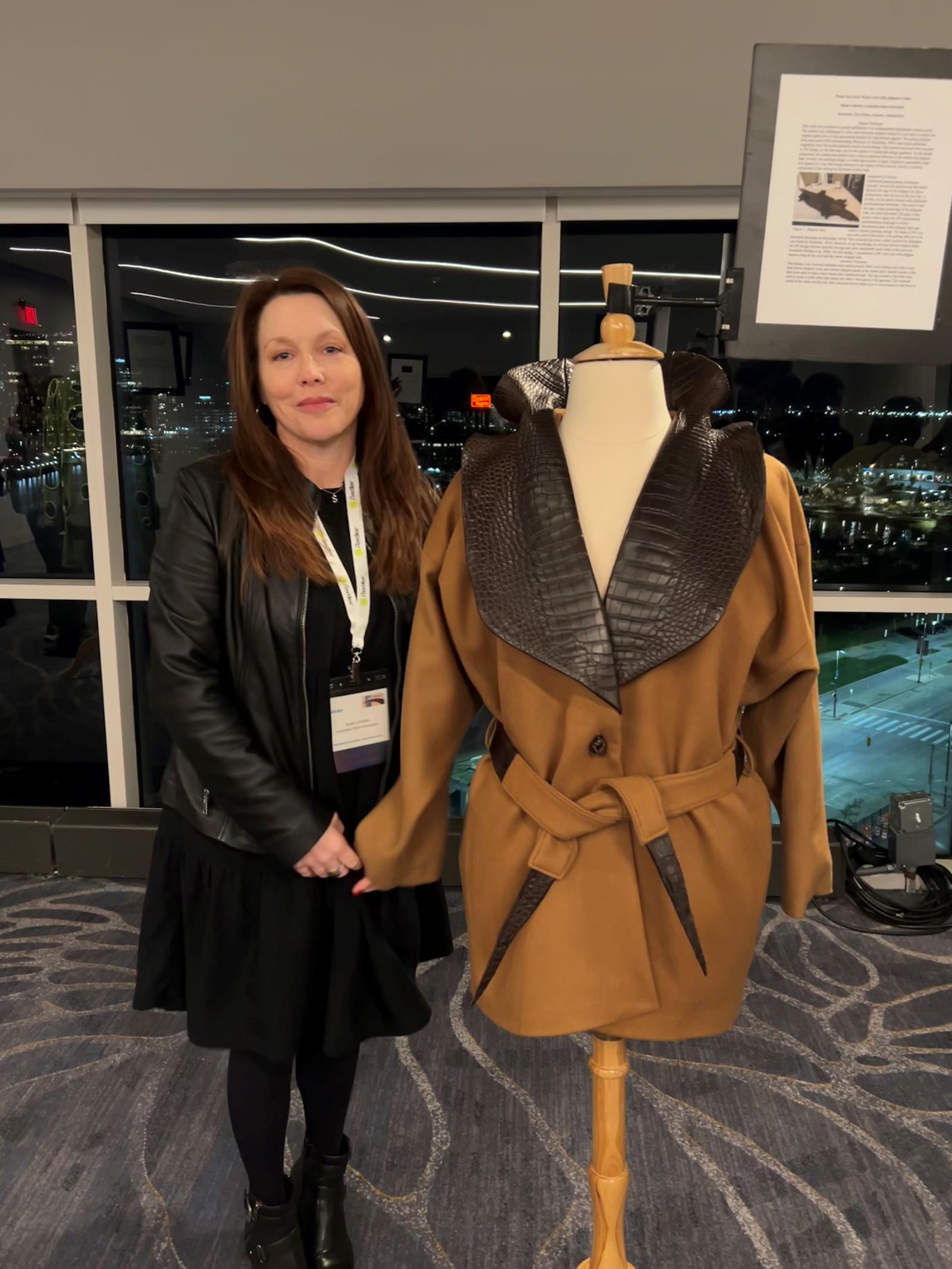Research Spotlight: Susan Lindrew and Zero Waste Apparel
January 11, 2024
In her final year as a graduating senior in Textiles, Apparel, and Merchandising with a concentration in apparel design, Susan Lindrew creatively repurposed American alligator leather for high-fashion apparel. Guided by a mentor in zero waste (ZW) pattern making, Lindrew's resulting ZW wool coat showcased her innovative approach to sustainable design, emphasizing the ecological importance of alligator leather in the Southern landscape. The design strategically utilized all parts of the hide, including the legs, tail, and sides, crafting an oversized cardigan-style coat with a camel-colored 100% wool Melton body and distinctive dark brown alligator collar, gusset, knot button, and patchwork belt. The project not only demonstrated Lindrew's successful application of ZW pattern making but also hinted at future possibilities for ZW designs involving alligator leather and other materials.

Lindrew creatively repurposed American alligator leather for high-fashion apparel
How did the Undergraduate Agricultural Research Grant contribute to the development of the project involving American alligator leather?
When I was approached by Dr. Casey Stannard to participate in the project, I did not know the extent of the research, but I jumped at the chance to participate. As the research went on, I was given more latitude, able to purchase resources, and covered the training courses that were needed to perform certain techniques. Without the grant, I would not have been able to research, experiment, and apply the learned concepts on my own. The research grant afforded me the opportunity to grow my knowledge while, hopefully, increasing the utilization of the American alligator hide and reducing waste in the fashion industry.
Can you elaborate on the creative application of American alligator leather for high-fashion apparel and how it aligns with the goals of sustainable fashion?
The goal was to find a way to reduce the “waste.” So much of the alligator hide ends up on the cutting room floor in the apparel industry. While various parts of animal hides go underutilized, we decided to focus on the American alligator due to the three-dimensional quality of the legs.
In what ways did you incorporate ZW pattern making into the design process, and what impact did it have on the final outcome?
Zero waste is truly about laying out all the resources and thinking “How can I utilize every piece and apply it to a design that is fashionable and aesthetically pleasing?"
What were the key inspirations drawn from the actual materials chosen for the design, and how did they contribute to the overall aesthetic and sustainability goals?
The three-dimensional leg actually has a curve to it that makes a natural wave when it's cut. I chose to incorporate this natural wave into the design. I conformed to what the alligator hide wanted to do instead of trying to make the alligator hide do what I wanted it to do.
Can you discuss any specific features or elements of the design that bring attention to the beauty of alligator leather and its significance in the ecological landscape of the South?
The hides are from a tannery in Georgia. It was important for us to utilize what we have in our region of the country. At the market, an alligator’s value is based on what is thought to be used, so by raising the utilization, we can raise the value.
How widely has the ZW technique been explored by designers, and what insights or advancements have been made in this field?
Over the past few years, there has been an increase in attention on ZW. The exciting challenge of ZW is seeing what unique things can be created through this technique. As it becomes more ecologically desirable to reduce waste, more designers and consumers are becoming interested and more research is being conducted on the topic.
Why is ZW so important?
More light has been shed on the amount of waste produced by the fashion industry, especially in the wake of fast fashion. I think it is important for designers to try it and at least use a mentality of 'use as much as you can and waste none' if at all possible. While I do believe that ZW would have an industry-wide impact, a solution to the current waste issue will have to come from a change in industry practices and consumer behavior.
“ The College of Agriculture and its faculty have been so instrumental and supportive throughout this entire research project! ”